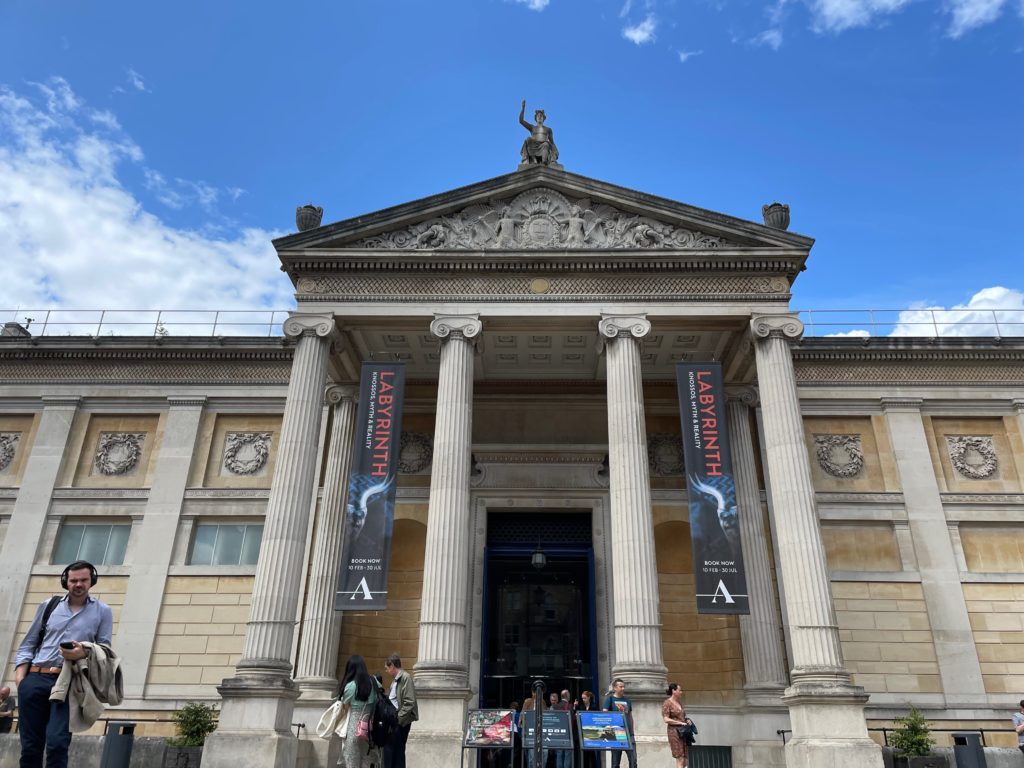
The Entrance to the Ashmolean Collection, Oxford.
The Ashmolean Collection is one of the oldest museums in the world. Established in 1677 as the first public museum in Britain, starting as a simple cabinet of curiosities given to the University of Oxford, it now has a significant collection of artifacts and works of art from all corners of the world: from Europe to Asia, from the Americas to Africa. Over its history as a public museum, stretching almost 350 years, it has gathered treasures worldwide.
We visited the Ashmolean on July 19th of 2023, and we were blown away by the sheer variety of the artifacts in its collection. Below, we’ll be going through some of these artifacts, and answering the question: what makes it so special?
Antiquities
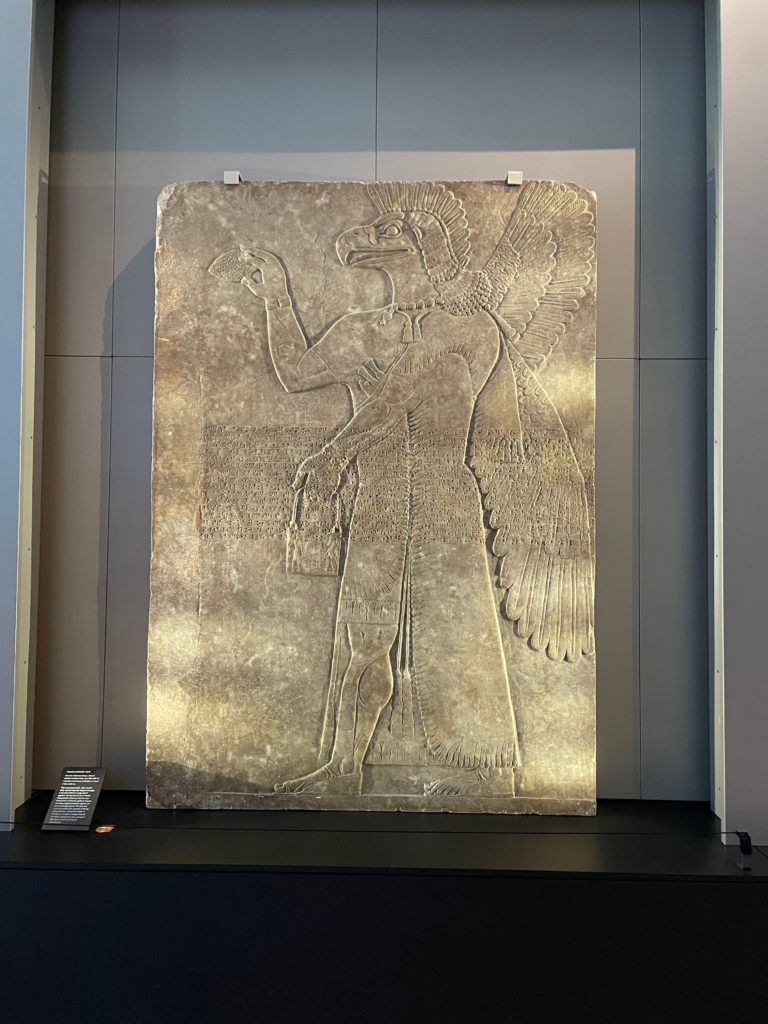
Assyrian wall carving.
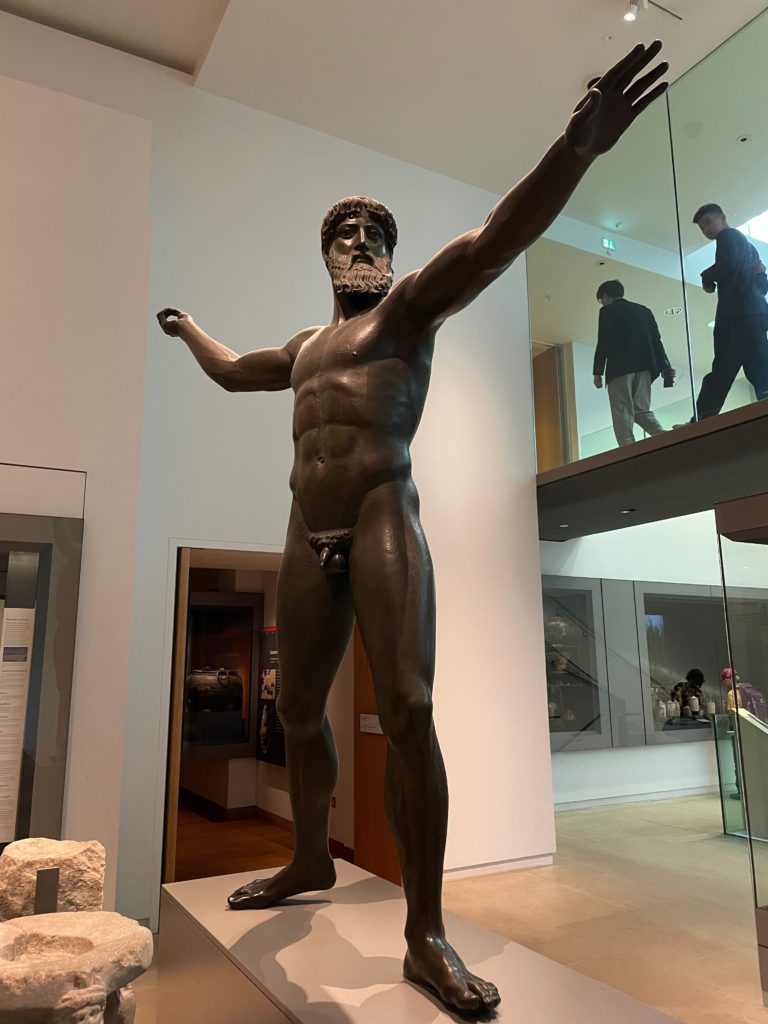
Cast of the Artemision bronze.
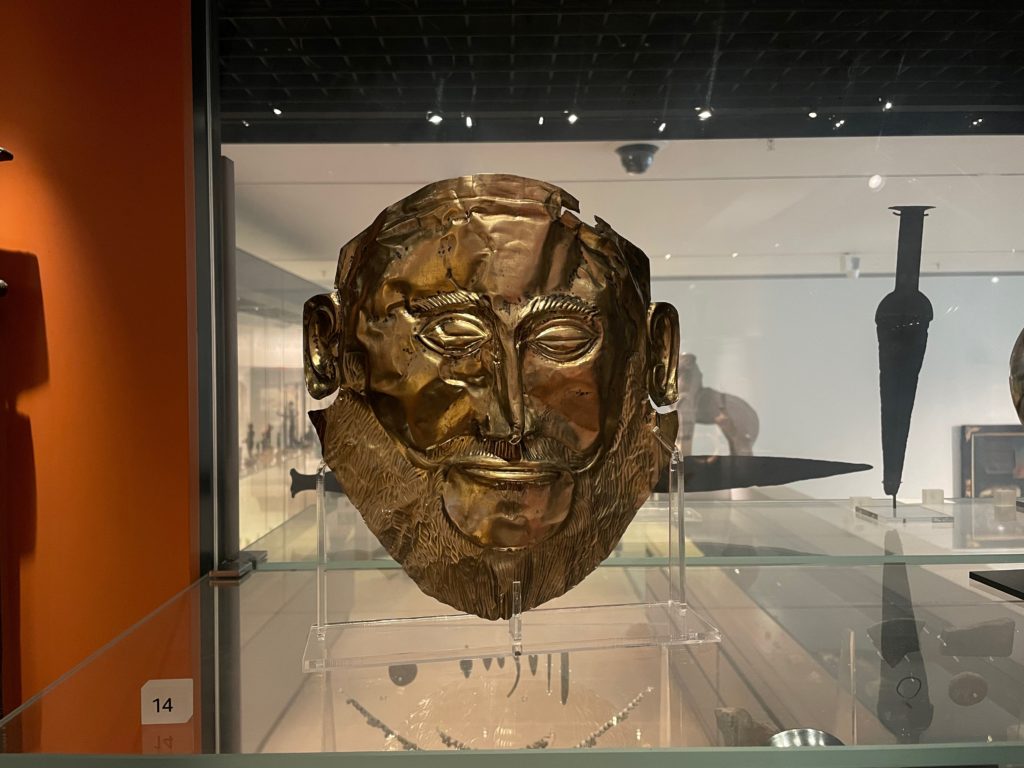
Gold funeral mask of Agamemnon.
As soon as we entered the Ashmolean, we were greeted by their collection of Greco-Roman and Middle Eastern antiquities. Assyrian and Babylonian wall carvings, casts of Ancient Greek and Roman statues, and prehistoric artifacts of Mycenae were all present, displayed in bright glass cases.
Something to note about the Ashmolean is that its “path” is nonlinear; a room of Greek antiquities leads immediately to a collection of Asian statues, which leads to Babylonian art, etc., etc. For instance, right after the collection of Greco-Roman antiquities was a collection of Buddhist statues from South Asia, which led back to Greco-Roman antiquities before going on to Islamic art. And so on. It’s a surprisingly refreshing format for a museum and allows for a somewhat eclectic experience. Artifacts sorted in chronological order are unheard of here.
Highlights of the antiquities included, among other things, an impressive collection of casts of Greco-Roman statues from all over the world, including one of my favorites, Laocoön, as well as one of the friezes of the Ara Pacis in Rome. Also notable was a cast of Agamemnon’s gold funeral mask, found during the excavation of Troy, and the cast of the Artemision bronze, impressive and imposing in its tall stature.
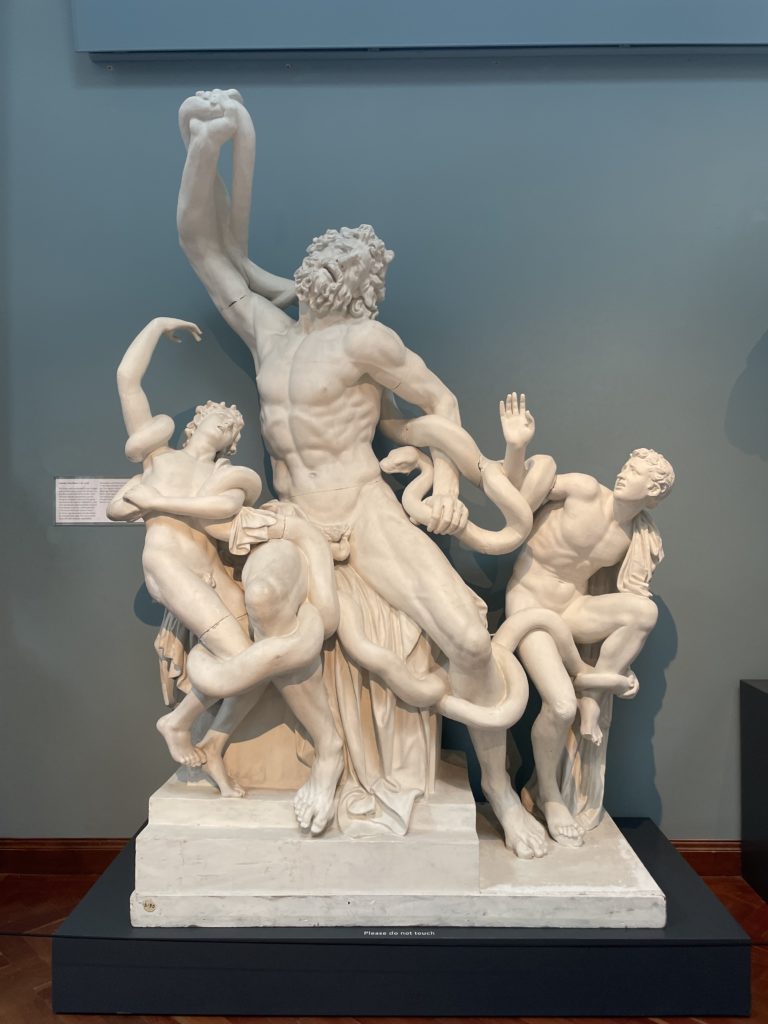
Cast of Laocoön.
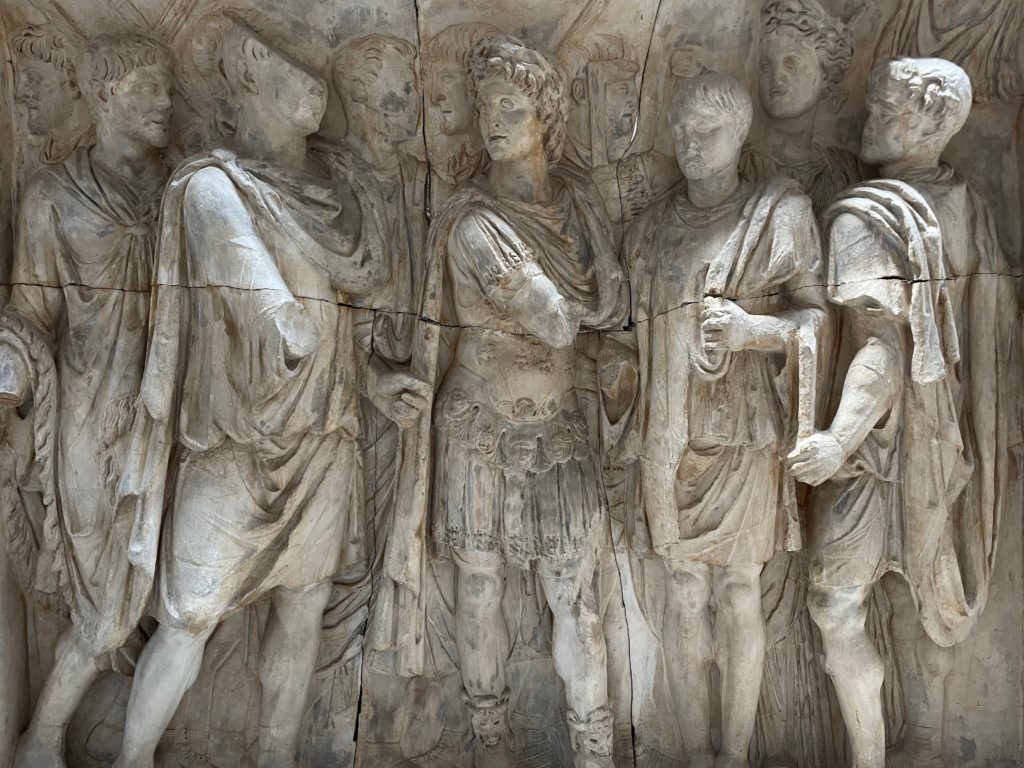
Cast of frieze from the Ara Pacis.
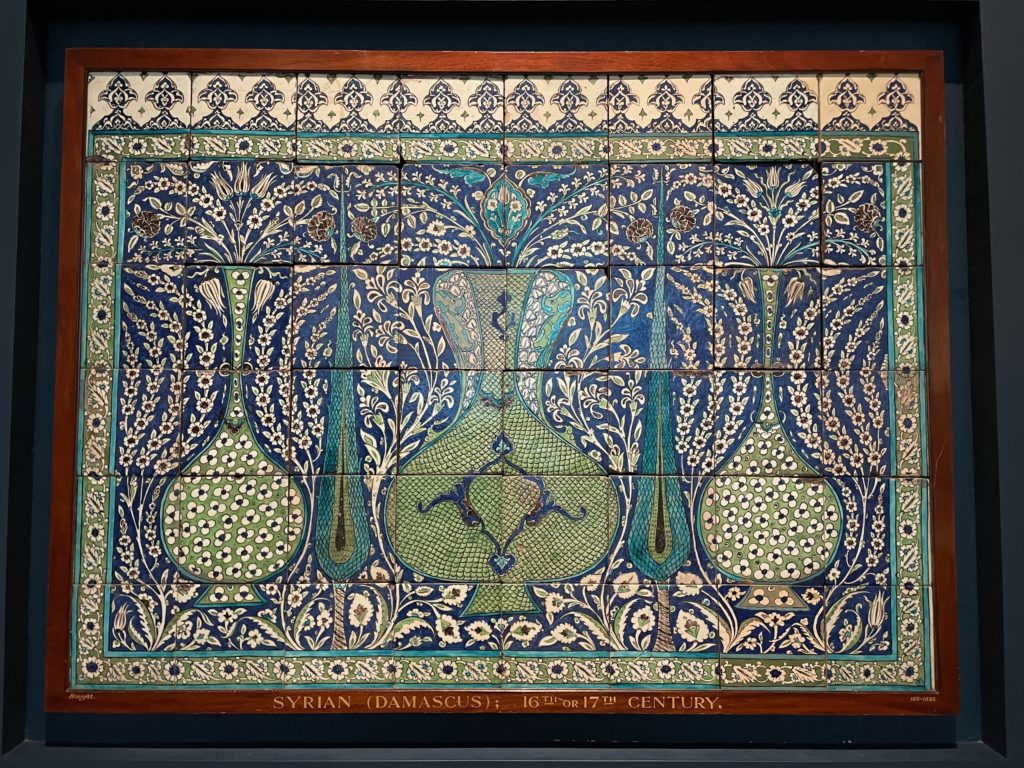
Segment of Islamic mosaic art.
The Medieval, the Renaissance, and the Baroque
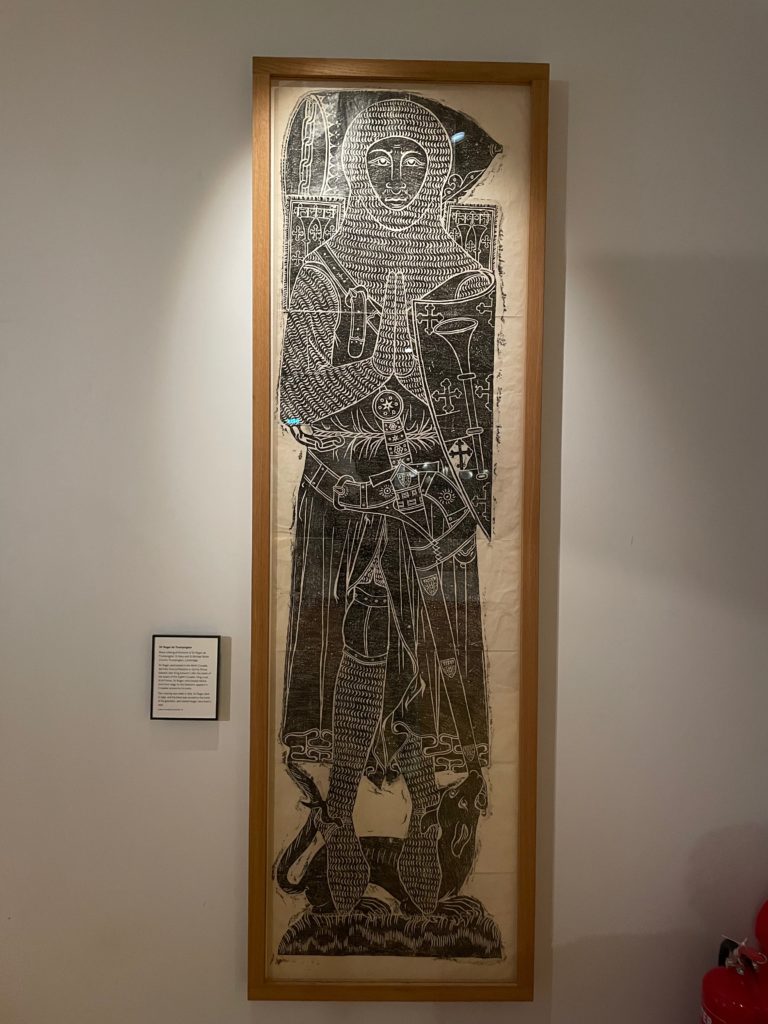
Brass rubbing of the tomb of Sir Roger de Trumpington.
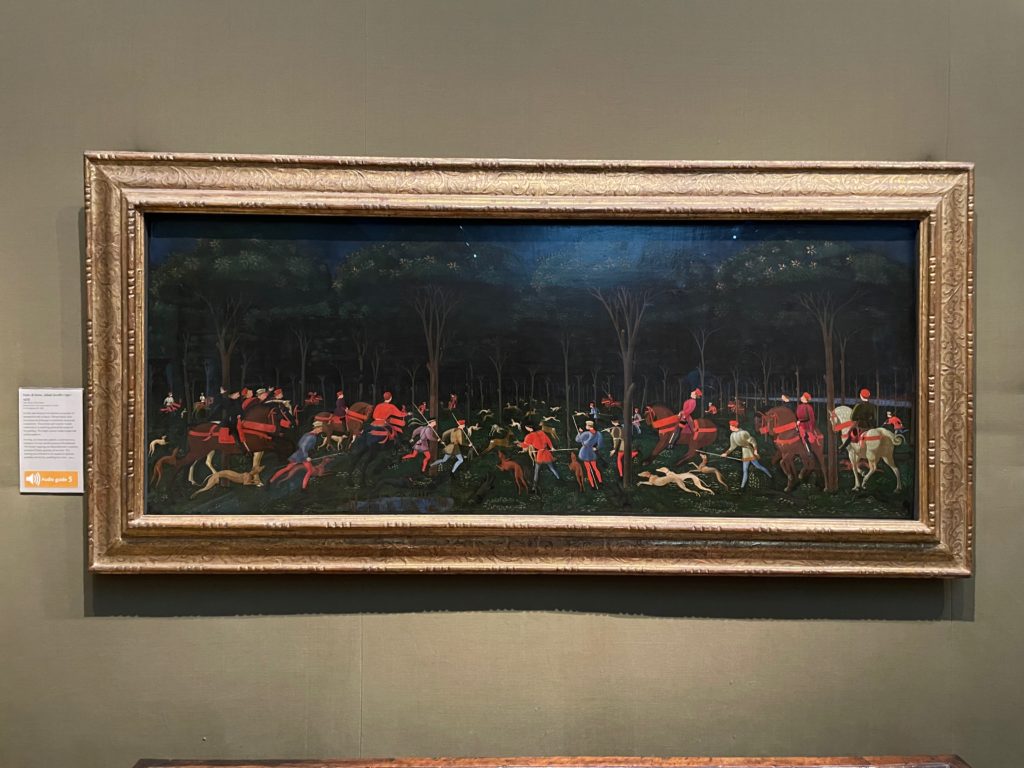
The Hunt in the Forest. Paolo Uccello, around 1470, oil on canvas.
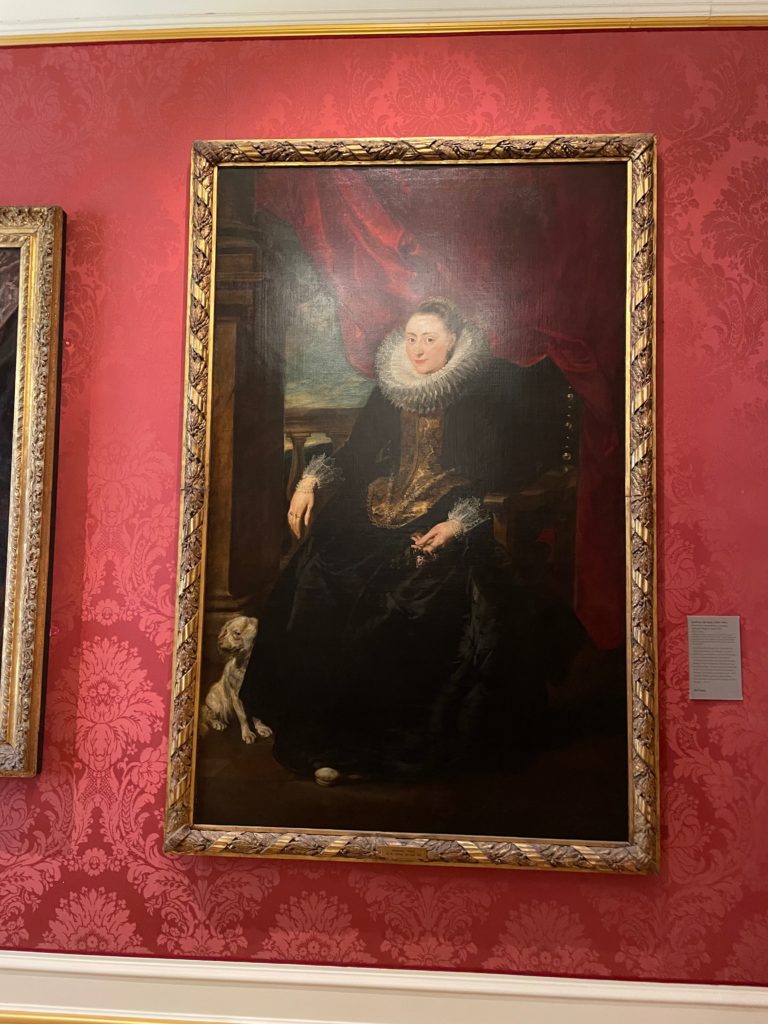
Portrait of a woman of the Vinck family. Anthony van Dyck, 1619, oil on canvas.
From the antiquities of Europe and Asia, we went to the Medieval collection. Most of the works here were European, such as the brass rubbing of the tomb of Sir Roger de Trumpington shown above, although some, such as the Islamic mosaic art also above, also dates from around the same period.
The eclectic style of the museum especially shows in this sector: Islamic art, Medieval artifacts, an impressive collection of Stradivarius violins, and an even more impressive collection of British porcelain, spanning a half dozen glass cases, were all adjacent to each other, almost haphazardly. The experience is almost surreal.
Then we went on to the Renaissance collection, which heavily featured the works of 14th and 15th-century Italian masters. Notably, the museum’s most famous painting, Paolo Uccello’s The Hunt in the Forest, was located here, deftly demonstrating a deep understanding of perspective and motion in a stil depiction. Also on show was a sketch by Michelangelo, as well as works by Tintoretto and Titian’s late period.
Some of the real highlights, though, were in the museum’s Baroque collection. Here, works by Anthony van Dyck, the legendary court painter of Charles I, were on display, including Portrait of a woman of the Vinck family. Of course, the quality of the works here were great, demonstrating a mastery of the mediums of sculpture and oil painting.
Romanticism and concluding thoughts
The final stretch of the museum primarily featured the romantic movement towards the modern day. These paintings were less driven by the theme or subject of the artwork, but rather sought to accurately convey the “feel” of the subject, an ideal which eventually led to the Impressionist movement.
The Ashmolean collection is one of great historical prestige. Its collection, as well as its method of organizing it, is pretty rare in museums in general. This kind of eclectic and nonlinear organization is a trait that I would like to see in more museums in the future.